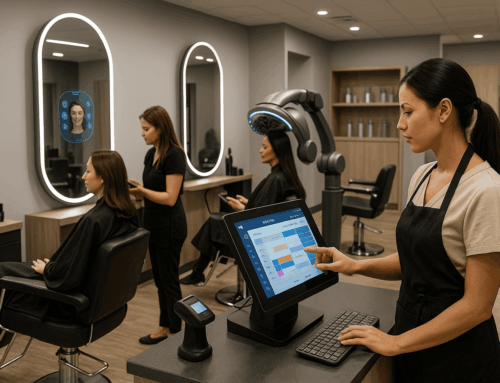Running a clothing store is thrilling but challenging. Trends evolve, customer preferences shift, and competition is fierce. Even the best stores can experience downturns. If your clothing store is losing money or stuck in a downward trend, don’t panic. With the right steps, you can diagnose the problems, fix internal issues, respond to external pressures, and bring your store back to profitability. This comprehensive ultimate guide will walk you through every critical detail.
(If you also operate a different type of retail business, you may want to check out our specialized resources like Retail Shop Software and Clothing Store Software to optimize your point-of-sale operations and drive better performance.)
Diagnosing the Problem: Internal vs External Factors
Before fixing anything, you need to fully understand what went wrong. Problems can stem from inside your business (internal factors) or from external forces (external factors).
- Internal Factors: Employee behavior, customer service, inventory management, marketing, pricing strategies, store atmosphere, and point-of-sale (POS) system efficiency.
- External Factors: Neighborhood foot traffic, macro-economic changes, competitor innovation, consumer trends, online reputation, and market shifts.
Both areas must be thoroughly assessed. Think of this stage like a health checkup: diagnose first, then treat.
Part 1: Internal Factors – How to Audit and Improve Inside Your Store
1. Employee Productivity and Accountability
Employees are your ambassadors. If they’re disengaged, lazy, or poorly trained, customers leave — and often, they don’t come back.
Signs of Trouble:
- Low morale
- Poor greeting behavior
- Reluctance to assist customers
- Frequent checkout mistakes
Real-world Example: In a struggling Miami boutique, mystery shoppers found employees who didn’t even look up from their phones when customers entered. Sales dropped 35% year over year.
Action Steps:
- Implement a POS software that tracks individual employee sales and productivity.
- Create KPIs like conversion rates, average transaction value, and customer satisfaction scores.
- Run monthly “mystery shopper” evaluations.
- Hold quick daily team huddles and deep-dive weekly reviews.
Pro Tip: Incentivize high performance with bonuses, not just penalties for failure.
2. Customer Experience: How Are Shoppers Being Treated?
Customers today want an experience, not just a transaction.
Measure It:
- Quick surveys at checkout (“How was your experience today?”)
- Monitor online reviews religiously.
- Secret-shop your own store.
Fix It:
- Train employees to engage personally: “What occasion are you shopping for today?”
- Offer free personal shopping consultations.
- Use your POS software to set up loyalty programs and remember customer preferences.
Statistic: According to a Bain & Company study, a 5% increase in customer retention can increase profits by 25% to 95%.
3. Product Offering: Is Your Inventory Still Relevant?
Your clothes might have been trendy… two years ago. Are you staying current?
Checklist:
- Inventory turnover rate below 3 per year = bad.
- Dead stock over 10% of inventory = bad.
Solutions:
- Analyze sales by item category monthly using your POS software.
- Attend trade shows, follow influencers, and monitor trend reports.
- Introduce “fast fashion” limited collections.
- Survey top customers for what they want more of.
Mini-Case Study: A New York boutique owner revitalized her store by pivoting to sustainable fashion after surveying her top 50 customers — boosting sales 28% in a single quarter.
4. Pricing and Promotions: Are You Competitive?
Pricing can make or break customer decisions instantly.
Secret Shop:
- Visit 3-5 competitors.
- Document price points and promotions.
- Analyze customer service levels.
Adjust Strategy:
- Offer tiered pricing: Premium, Standard, Value.
- Run “pop-up” flash sales (email marketing + social media blast).
- Track promotion ROI using POS software promo reporting.
5. Checkout Mistakes and Employee Theft
Mistakes at checkout cost money. Theft is devastating.
Common Errors:
- Incorrect discounts
- Unrecorded returns
- Missed loyalty points
Theft Red Flags:
- Inventory shrinkage
- No-receipt returns
- Cash register discrepancies
Tools to Detect:
- POS software audit trails.
- Random cash counts.
- Install discreet surveillance if needed.
Statistic: According to the National Retail Federation, employee theft accounts for 30% of inventory shrinkage.
Part 2: External Factors – The Environment Around Your Business
1. Foot Traffic Drop: Physical Location
No foot traffic = no sales.
Measuring:
- Use people counters.
- Observe manually 3x per day.
- Compare season-over-season.
Solutions:
- Host trunk shows, influencer events, or “Shop & Sip” nights.
- Improve your window displays — refresh every 2 weeks.
- Launch geo-targeted local ads.
2. Online Store Traffic and Sales
Digital presence is non-negotiable.
Audit:
- Google Analytics: Sessions, Bounce Rate, Conversion Rate.
- SEO Rankings: Are you visible for “boutique [your city]”?
Boost:
- SEO optimization (product pages, blog posts).
- Instagram and TikTok influencer collaborations.
- Cart abandonment email sequences.
Pro Tip: Your POS software can sync with e-commerce platforms like Shopify to track both online and offline sales.
3. Local Market Changes
Neighborhood shifts can kill businesses if ignored.
Watch for:
- New competitors
- Rising rents
- Crime rates
Strategies:
- Consider opening pop-up shops in stronger locations.
- Rebrand and market to new demographics if the neighborhood changes.
4. Macro-Economic Factors
Sometimes it’s just tough times for everyone.
Adapt:
- Offer basics and essentials.
- Create “budget” sections.
- Emphasize value: “Quality that lasts.”
Statistic: According to Statista, U.S. apparel sales fell by 26% during 2020’s recessionary period but rebounded by adjusting offerings to customer needs.
Part 3: Competitive Analysis – How to Spy and Succeed
You can’t beat competitors you don’t study.
How To Conduct a Competitive Analysis:
- Identify top 3-5 direct competitors.
- Secret shop their stores and websites.
- Document prices, inventory, promotions, and customer service.
- SWOT them (Strengths, Weaknesses, Opportunities, Threats).
Pro Tip: Focus especially on how they use their POS software to track inventory, customer loyalty, and promotions.
Part 4: Action Plan: Step-by-Step Roadmap to Recovery
First 30 Days:
- Conduct complete internal audit.
- Launch employee retraining blitz.
- Refresh inventory based on customer trends.
- Update in-store displays.
- Relaunch loyalty programs via POS software.
Days 31-90:
- Launch new marketing campaigns.
- Host store events to boost foot traffic.
- Optimize e-commerce presence.
- Measure progress weekly via POS reporting dashboards.
Metrics to Watch:
- Sales growth rate
- Conversion rates
- Average transaction size
- Foot traffic counts
- Loyalty program participation
Part 5: When to Seek Outside Help
If after 90-120 days you’re still underwater:
- Hire a retail consultant.
- Join SCORE (free mentoring from retired executives).
- Take online courses in digital marketing or fashion retail management.
Conclusion: Resilience and Adaptation Win
Retail is tough — especially clothing retail. But with the right approach, even a severely struggling clothing store can thrive again.
Adapt. Innovate. Execute. Track everything through smart use of your POS software and operational audits.
(For more insights into choosing the right point of sale solution, explore our guide on Retail POS Software and learn how tailored POS systems can transform your store’s operations.)
Your comeback story starts today.






